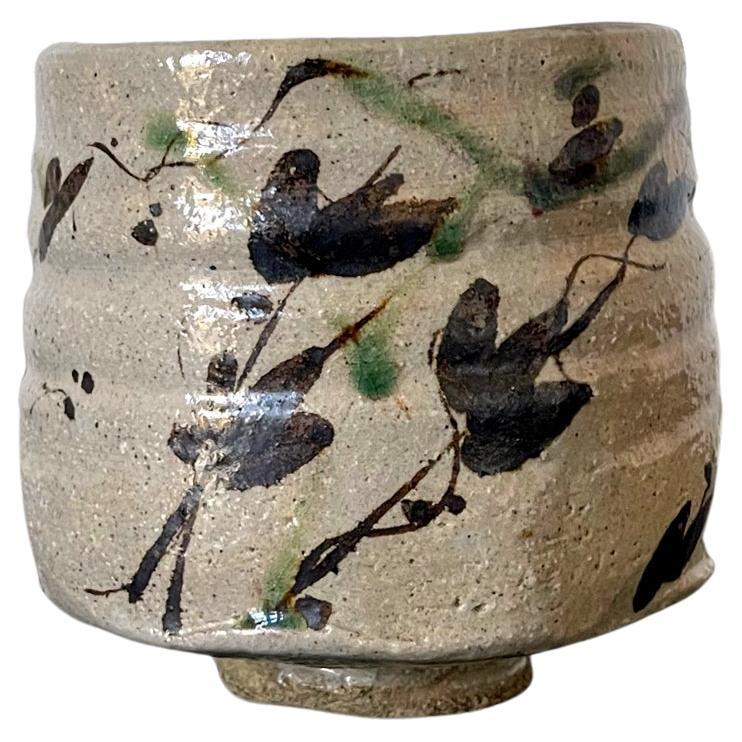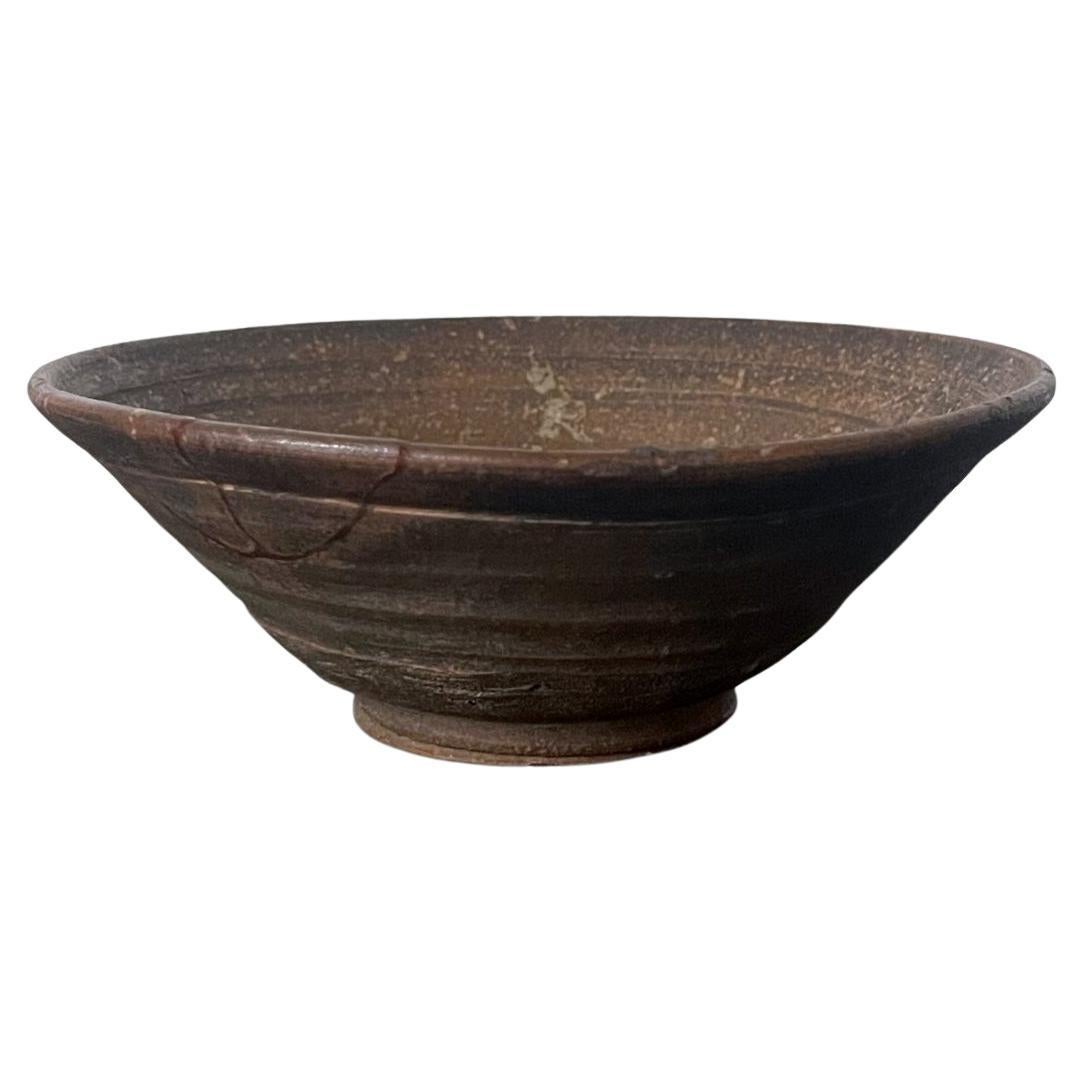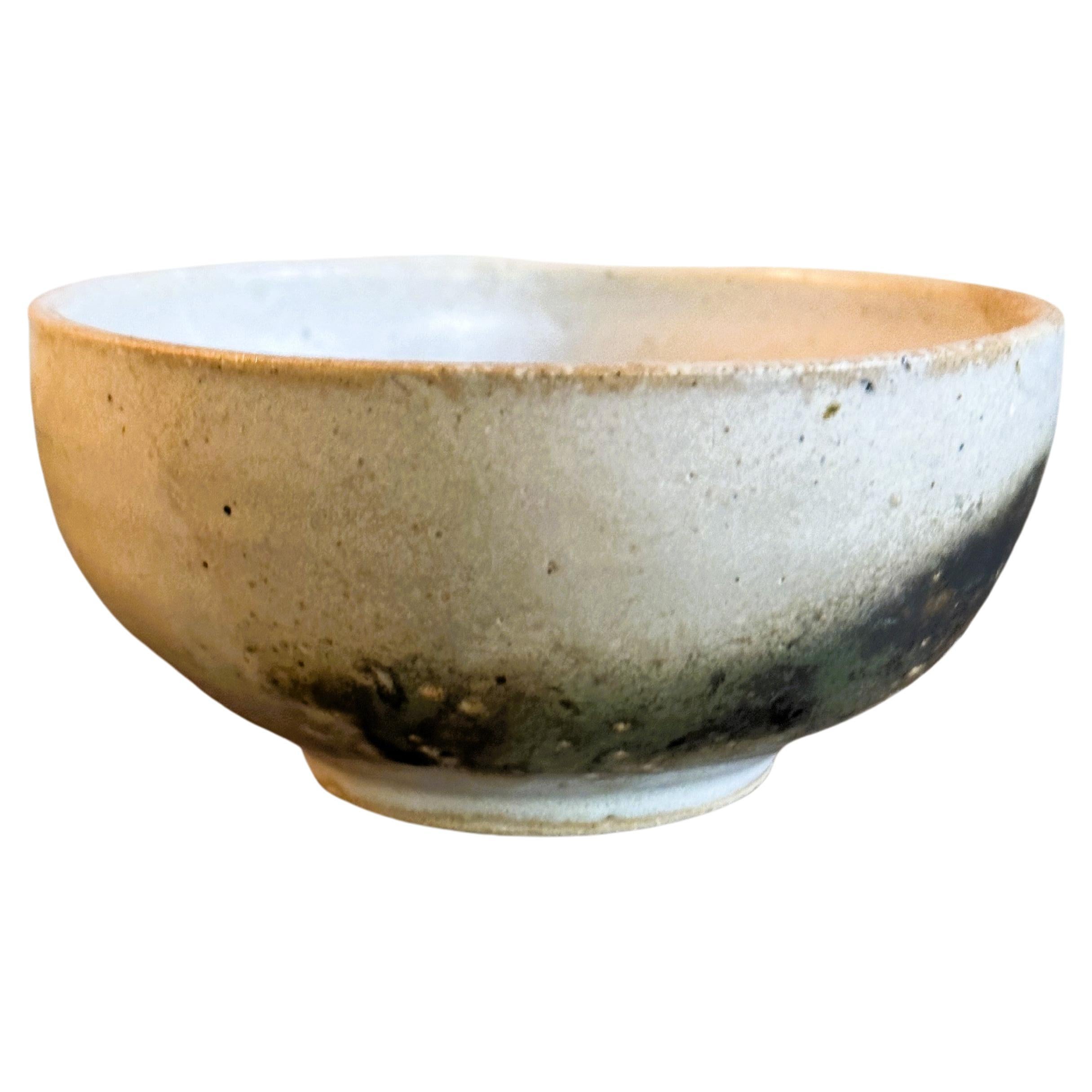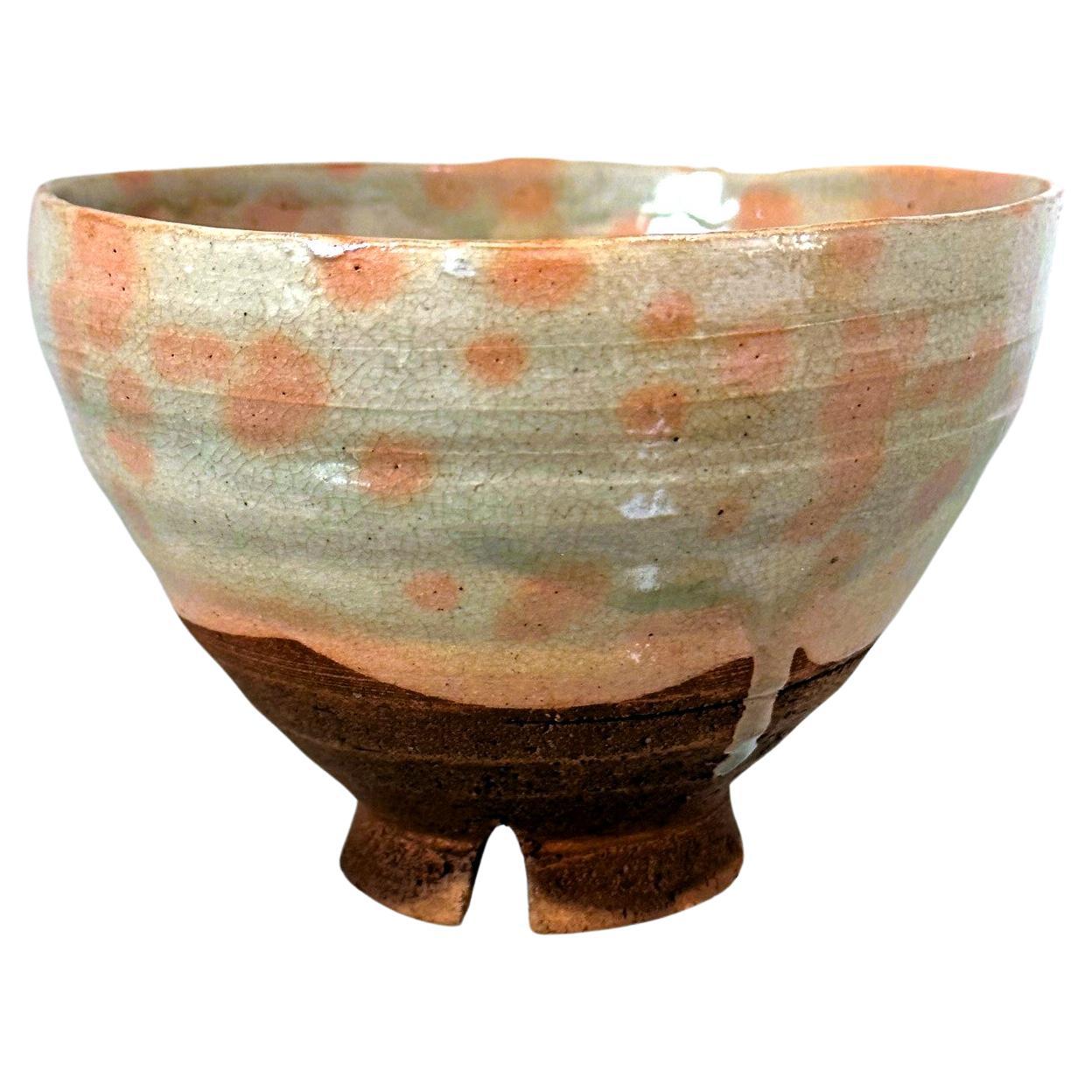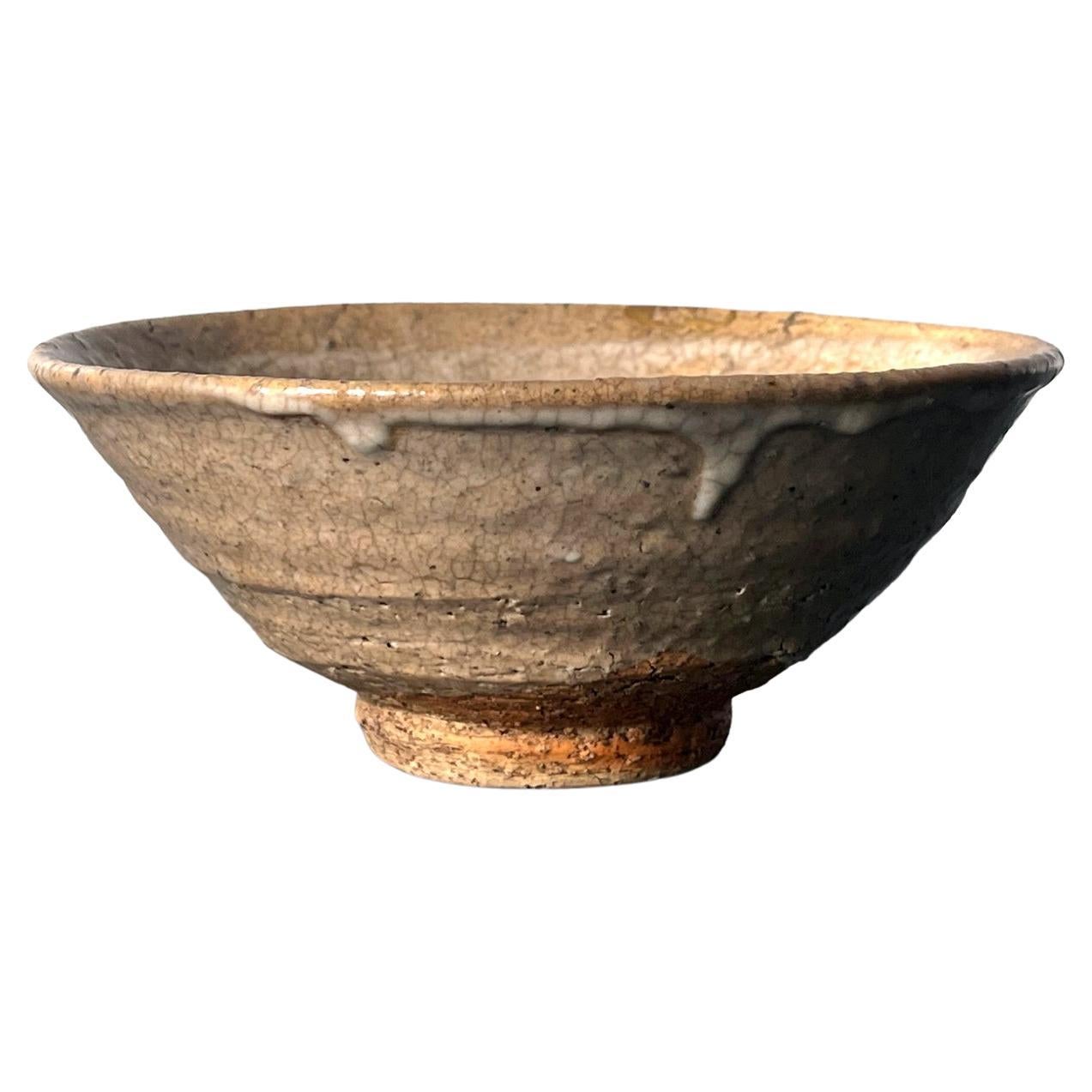Items Similar to Ceramic Tea Bowl 'Chawan', by Kamisaka Sekka
Want more images or videos?
Request additional images or videos from the seller
1 of 10
Ceramic Tea Bowl 'Chawan', by Kamisaka Sekka
About the Item
A ceramic tea bowl decorated with autumn grasses with signed and sealed tomobako.
Painter and designer, Kamisaka Sekka (Japan, 1866-1942) has been one of the most important Japanese artists who brought the traditional aesthetic in the western world. Sekka came from a samurai family - his father was in service at the imperial palace in Kyoto - and studied art during a very delicate period of Japanese history: the transition between the old feudal system of the Edo period to the modern capitalistic one of the Meiji restoration. It has been a traumatic era for all Japanese people and it had relevant effects on artists and their works. In fact, they had to choose between “old” and “new”, between “traditional” and “international”. Sekka chooses the road of national traditions and committed himself in all the fields he could. Under the guidance of his teacher Kishi Kokei, he decided to follow the art of the Rinpa School, using plain and simple designs.
- Dimensions:Height: 1.97 in (5 cm)Width: 3.78 in (9.6 cm)Depth: 2.76 in (7 cm)
- Materials and Techniques:
- Place of Origin:
- Period:
- Date of Manufacture:circa 1900
- Condition:
- Seller Location:Milano, IT
- Reference Number:
About the Seller
5.0
Recognized Seller
These prestigious sellers are industry leaders and represent the highest echelon for item quality and design.
Established in 2005
1stDibs seller since 2018
10 sales on 1stDibs
Typical response time: 1 hour
- ShippingRetrieving quote...Ships From: Milano, Italy
- Return PolicyA return for this item may be initiated within 7 days of delivery.
More From This SellerView All
- Hanging Scroll by Kamisaka Sekka, JapanLocated in Milano, ITThis painting represents a man waiting under a dark tree. The composition is extremely simple but suggestive. The artist, with few elements, can, in fact, create a vivid and dynamic scene, based on the tension between the strong ink stain that renders the tree and the elegant figure of the man, dressed in an aristocratic robe. Painter and designer, Kamisaka Sekka...Category
Early 20th Century Japanese Paintings and Screens
MaterialsPaper
- Late 17th Early 18th Century Nabeshima Japanese Porcelain Plate Fruit DesignLocated in Milano, ITDish with karatuuri (melon) design Late 17th-early 18th century Porcelain decorated with cobalt blu underglaze and red fruits Diameter 15.2 cm Nabeshima ware was made at Okawachi near Arita in Kyushu under the authority of the Nabeshima clan. The feudal lords of Nabeshima were so proud of their technological skill, that throughout the Edo period (1615-1867) they gave porcelain (and swords) as presents to the lords of other provinces. Most of Nabeshima porcelain...Category
Antique Late 17th Century Japanese Ceramics
MaterialsPorcelain
- Shunichi Yabe Kofu #3, Wind of Light, Bizen Stoneware, 2013Located in Milano, ITWhat is immediately striking about the work of Yabe is his keen and natural sense of line. The artist, in fact, takes great care in first drawing an image of the work, and after hand-building the basic form a blend of Bizen mountain and rice-paddy clays, the work is carved with a knife into the form he had envisioned. After carving, the work is first bisque-fired and then its main-firing is executed in a small wood kiln for 3 days at a temperature reaching 1180 degrees. The resulting futuristic forms of Yabe’s stoneware present fresh new possibilities for Japanese Bizen clay in the 21st century. Shunichi Yabe...Category
21st Century and Contemporary Japanese Ceramics
MaterialsCeramic
- Shinto Sunnobi Tanto by Takahashi Naganobu, 1846Located in Milano, ITA Shinto Sunnobi Tanto by Takahashi Naganobu, 1846 Unsho Takahashi Naganobu / A lucky day of August Koka san-nen (1846) Yokota became monk with this sword - NBTHK Tokubetsu Hozon To...Category
Antique 19th Century Japanese Metalwork
MaterialsIron
- Japanese Articulated Iron Jizai Okimono of a Lobster by Myochin MuneharuLocated in Milano, ITThis articulated okimono represents a naturalistically rendered lobster, with fully articulated limbs, antennae, body, and tail and comes with an inscribed wood storage box. Signed:...Category
Antique 19th Century Japanese Metalwork
MaterialsIron
- Painting by Maeda Josaku (Japan, 1926 – 2007), Paysage Humain N° 14, 1960Located in Milano, ITSigned: Josaku Meda. 60. Singed on the back: "Paysage humain" N°14 / 7.1960 / Josaku MAEDA / à Paris Exhibitions: Turin (Italy), Gissi Gallery, Collettiv...Category
20th Century Japanese Paintings and Screens
MaterialsCanvas
You May Also Like
- Japanese Mino Ware Oribe Type Chawan Tea BowlLocated in Atlanta, GAA Japanese Kutsu-gata (clog-shaped) chawan (tea bowl) circa 19th century possibly older. The stoneware bowl potted from buff clay has a slight irregular shape and an unusual depth for a tea bowl. Of Mino ware...Category
Antique 19th Century Japanese Meiji Ceramics
MaterialsCeramic
- Korean Ceramic Kakinoheta Chawan Tea BowlLocated in Atlanta, GAA "Kakinoheta" type ceramic chawan (tea bowl) made in Korean during Joseon dynasty circa 16th-17th century. The bowl has a slight irregular flat shape w...Category
Antique 17th Century Korean Other Ceramics
MaterialsCeramic
- Glazed Ceramic Chawan Tea Bowl by Toshiko TakaezuBy Toshiko TakaezuLocated in Atlanta, GAA small elegant glazed ceramic tea bowl (chawan) by Japanese American artist Toshiko Takaezu (American, 1922 - 2011). The well-balanced form is hand built and shows just a slight irr...Category
Late 20th Century American Modern Decorative Bowls
MaterialsCeramic
- Japanese Glazed Ceramic Gohon Chawan Tea BowlLocated in Atlanta, GAA bespoken Japanese ceramic tea bowl with glazed with fabric insert, pouch and original padded wood tomobako box. The chawan has a slightly irregu...Category
Antique 19th Century Japanese Meiji Ceramics
MaterialsCeramic
- Korean Ceramic Irabo Tea Bowl Chawan Joseon DynastyLocated in Atlanta, GAA ceramic chawan tea bowl made in Korea for Japanese market circa 17th century. The chawan is identified as Irabo type. Irabo bowls were essentially con...Category
Antique 17th Century Korean Other Ceramics
MaterialsCeramic
- Korean Ceramic Ido Tea Bowl Chawan Joseon DynastyLocated in Atlanta, GAA ceramic stoneware chawan tea bowl made in Korea circa 16-17th century. The chawan is identified as Ko-ido (small ido) due to its size and form. Ido bowls were made since 15th centu...Category
Antique 17th Century Korean Other Ceramics
MaterialsCeramic
Recently Viewed
View AllMore Ways To Browse
Antique Ceramic
Antique Ceramic Signs
Important Japanese
Painterly Ceramic
Antique Asian Bowl
Japanese Signed Ceramic
Antique Kyoto
Antique Ceramic Bowl
Modern Gray Ceramic Bowl
Asian Painters
Antique Western Signs
Used Road Signs
19th Century Japanese Ceramic
Imperial Palace
Asian Art Signed With Seals
Tea Era
19th Century Tea Service
Modern Tea Service
